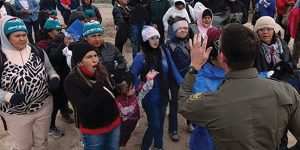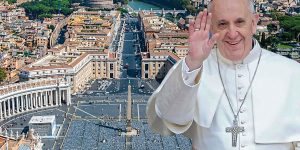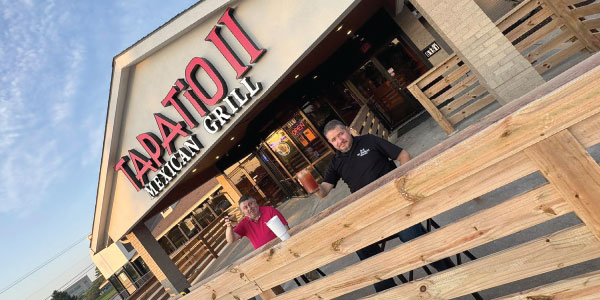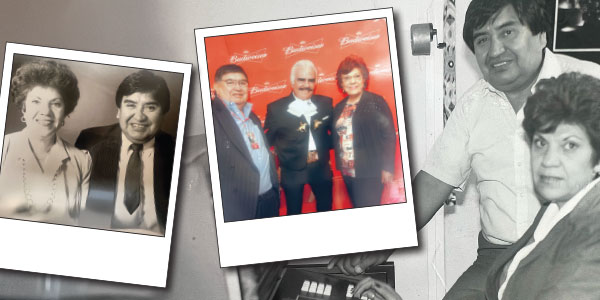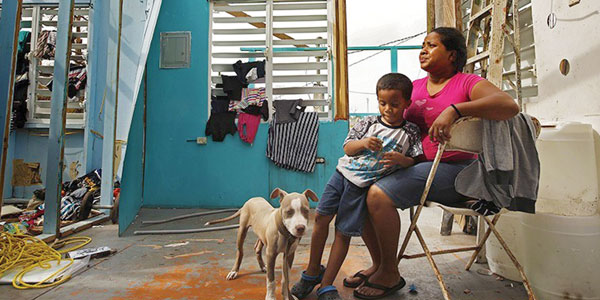
By Jorge Ramos
The dead can’t be hidden. They can’t be erased. Somebody knew them. They leave behind a void, photographs, memories. They can even come back to haunt us.
This is why it’s absurd that President Donald Trump is claiming that almost 3,000 people in Puerto Rico did not die in the aftermath of Hurricane Maria a year ago. The president says he believes the Democrats made up that number to make him “look as bad as possible.” This is perhaps the biggest lie that Trump has told so far during his administration.
A comprehensive study conducted by researchers at George Washington University (bit.ly/2wwqEqF) estimated that 2,975 people died within six months of Hurricane Maria, which hit Puerto Rico on Sept. 20, 2017. How did researchers come up with that number? Using official death certificates, researchers calculated an average annual death toll on the island under normal circumstances, from 2010 to 2017. Then they compared that average against the number of Puerto Ricans who died from September 2017 to February 2018. As a result, they obtained a figure known as “excessive mortality,” the number of deaths due to a specific circumstance, such as a disease or a natural disaster. In short: If Hurricane Maria hadn’t hit Puerto Rico, 2,975 more people would probably still be alive today.
But Trump doesn’t understand neither facts nor numbers. He lives in a bubble. His magical thinking makes him believe that only what he says is true.
Even the governor of Puerto Rico, Ricardo Rosselló, who at times has been excessively diplomatic toward Trump, disagreed. “Neither the people of Puerto Rico nor the victims deserve their pain to be called into question,” the governor told me in a recent interview. “It’s important to say it bluntly: There is a difference here, because we are being treated like second-class citizens.”
Puerto Ricans, of course, are American citizens. But the governor and many Puerto Ricans believe that the island was not treated the same way that Texans were after Hurricane Harvey in August 2017.
First, we saw the humiliating images of Trump tossing paper towels into the crowd during his brief visit to Puerto Rico. Then, it appears the Federal Emergency Management Agency treated the hurricane victims in Texas much more favorably than those in Puerto Rico. According to an investigation by Politico (politi.co/2GdunRG), nine days after Hurricane Harvey, FEMA approved $142 million to help Texans, while the agency had allocated in the same time frame a mere $6 million for the victims of Hurricane Maria. During that period, 5.1 million meals were distributed in Texas, compared to 1.6 million in Puerto Rico. Texans received 4.5 million liters of water, while Puerto Ricans received 2.8 million liters.
The bottom line: Many lives could have been saved in Puerto Rico had Trump and his administration reacted more quickly and more efficiently. “The United States is the most powerful and sophisticated country, and has the most resources worldwide,” Rep. Luis Gutiérrez, a Democrat from Illinois, told me. “We still have people without electricity, water, and it’s already been a year.” Trump, in his tweets, says he doesn’t understand how the official death toll changed from 16, the estimate when he visited the island two weeks after the hurricane, to almost 3,000. The explanation is not complicated at all.
“Yes, 3,000 people died, and maybe a lot more,” said José Andrés, the Michelin star-awarded Spanish chef who organized the delivery of 3.6 million meals across the island after the hurricane. “You have to understand that there will always be damage emerging days, weeks or months after a hurricane. We had seniors who needed a machine to breathe, and there was no electricity — of course they died in the aftermath of the hurricane.” It’s cruel to deny that so many people died after such a powerful hurricane. It’s almost worse to call the administration’s response to Hurricane Maria a “success,” as Trump has done. The families of the victims won’t allow him to erase the dead like that.
_______________________________________________________________________________________________
Los Muertos No Se Esconden
Los muertos no se pueden esconder. Alguien los conoció. Dejan un vacío pero dejan, también, fotografías y recuerdos. Los muertos suelen ser enterrados sólo una vez, no dos. De hecho, no hay nada más obstinado que un muerto al que tratan de desaparecer; se nos aparece por todos lados.
Por eso resulta tan absurdo el tuitazo del presidente Donald Trump diciendo que no es cierto que casi 3 mil personas murieron en Puerto Rico tras el paso del huracán María hace un año. El Presidente cree que la cifra fue inventada por los Demócratas para “hacerlo ver mal”. Esta es, quizás, la mentira más grande que haya dicho Trump durante su presidencia.
Un exhaustivo estudio de la Universidad George Washington (aquí: bit.ly/2wwqEqF) calculó que 2.975 personas murieron durante los seis meses posteriores a la llegada del huracán María. La cifra está basada en certificados oficiales de defunción. ¿Cómo se llegó a esa cifra? Los investigadores obtuvieron un promedio de muertes normales desde el 2010 al 2017. Y luego compararon ese promedio con el número de personas que murieron de septiembre del 2017 a febrero del 2018. Así obtuvieron lo que se llama “mortalidad excesiva”. En conclusión: Si el huracán no hubiera golpeado a Puerto Rico, hoy habría otras 2.975 personas vivas todavía.
Pero Trump no entiende de razones ni de números. Vive una burbuja. Y su pensamiento mágico le hace creer que sólo lo que él dice es verdad.
Incluso el gobernador de Puerto Rico, Ricardo Roselló, que en varias ocasiones ha pecado de diplomático frente a Trump, estuvo en desacuerdo con él. “Ni el pueblo de Puerto Rico ni las víctimas merecen que se cuestione su dolor”, me dijo el gobernador en una entrevista. “Es importante establecer que aquí hay una diferencia porque somos ciudadanos de segunda clase”.
Por supuesto, todos los puertorriqueños son ciudadanos de Estados Unidos. Pero el gobernador, y muchos puertorriqueños, creen que la isla no fue tratada de la misma manera que Texas tras el paso del huracán Harvey en agosto del 2017.
Primero, están las humillantes imágenes de Trump tirando rollos de papel toalla a las víctimas del huracán en Puerto Rico. Y luego es que, efectivamente, Trump trató de una manera mucho más favorable a las víctimas del huracán en Texas que a las víctimas del huracán en Puerto Rico.
Una investigación de Politico.com (aquí: politi.co/2GdunRG) concluyó que nueve días después del huracán Harvey, FEMA — la agencia encargada de emergencias — había aprobado 141 millones de dólares en ayuda para las víctimas en Texas, frente a sólo $6 millones de dólares para las víctimas de María en Puerto Rico. En ese mismo período se distribuyeron 5.1 millones de comidas en Texas frente a sólo 1.6 millones en Puerto Rico. Y los texanos recibieron 4.5 millones de litros de agua frente a 2.6 millones que obtuvieron los puertorriqueños.
El punto es este. Muchas personas se hubieran podido salvar en Puerto Rico si el gobierno del presidente Trump hubieran reaccionado de una forma más contundente y efectiva. “Este es el país más poderoso, más sofisticado, y con mayores recursos que ningún otro sitio”, me dijo el congresista Demócrata, de origen puertorriqueño, Luis Gutiérrez. “¿Y tú viste al ejército de los Estados Unidos? El ejército más poderoso, el más sofisticado, nunca entró. … Todavía hay gente que no tiene luz, que no tiene agua, ¡a un año!”
Trump, en sus tuits, dice no entender cómo la cifra oficial de muertos pasó de 16, cuando él visitó la isla, a casi 3 mil. La explicación no es muy complicada. “Por supuesto que fueron 3 mil personas, y tal vez muchas más”, me dijo el chef José Andrés, quien organizó la entrega de 3.6 millones de comidas en la isla tras el paso del huracán. “Hay que entender que siempre va a haber daños a consecuencia de ese huracán a días, semanas o meses. Cuando tenías ancianos con máquinas para poder respirar, que simplemente no tenían electricidad ¡por supuesto que esa persona murió debido al huracán!”
Es muy tonto y cruel negar las muertes tras el paso de un poderosísimo huracán. Los familiares de las víctimas no lo van a permitir. Y nada puede ser un “éxito”, como le ha llamado Trump, cuando se te mueren casi 3 mil personas.



